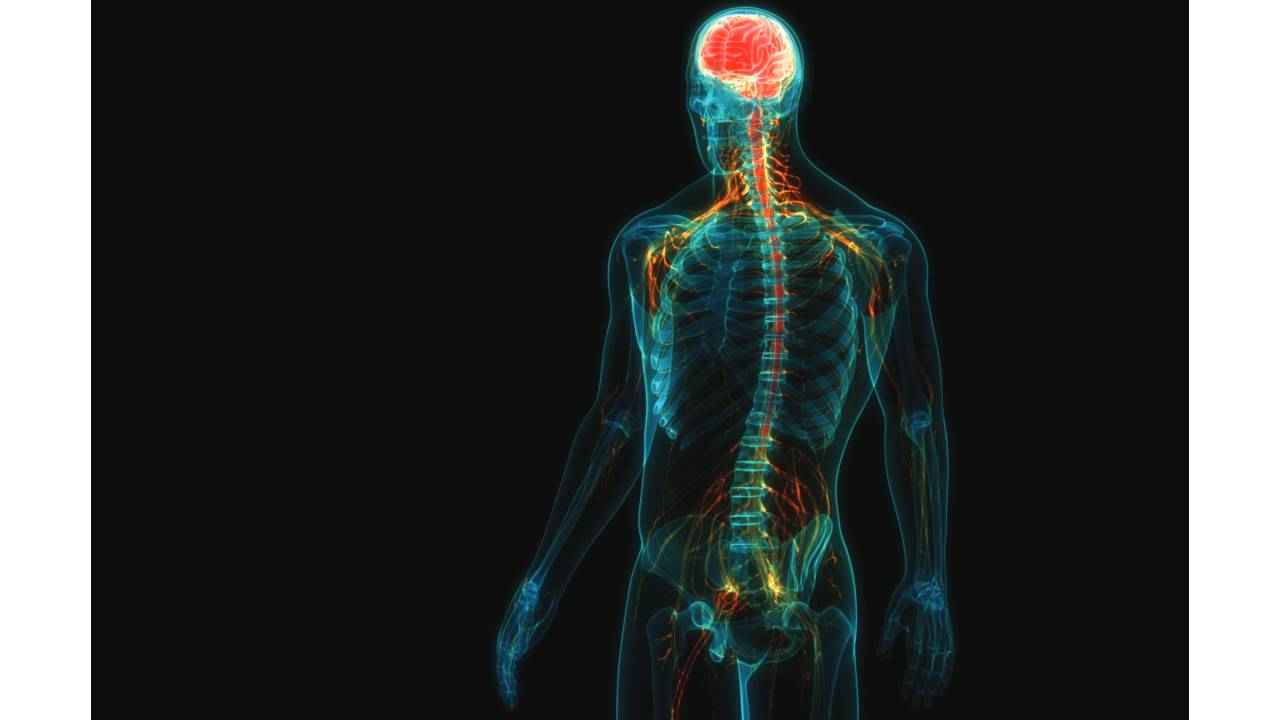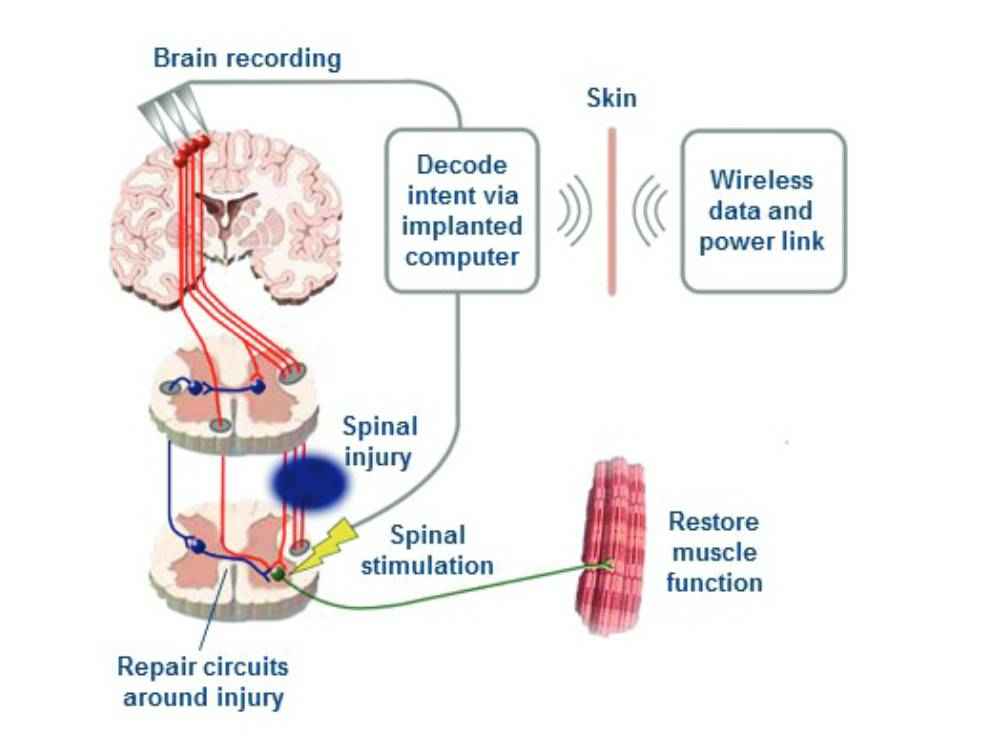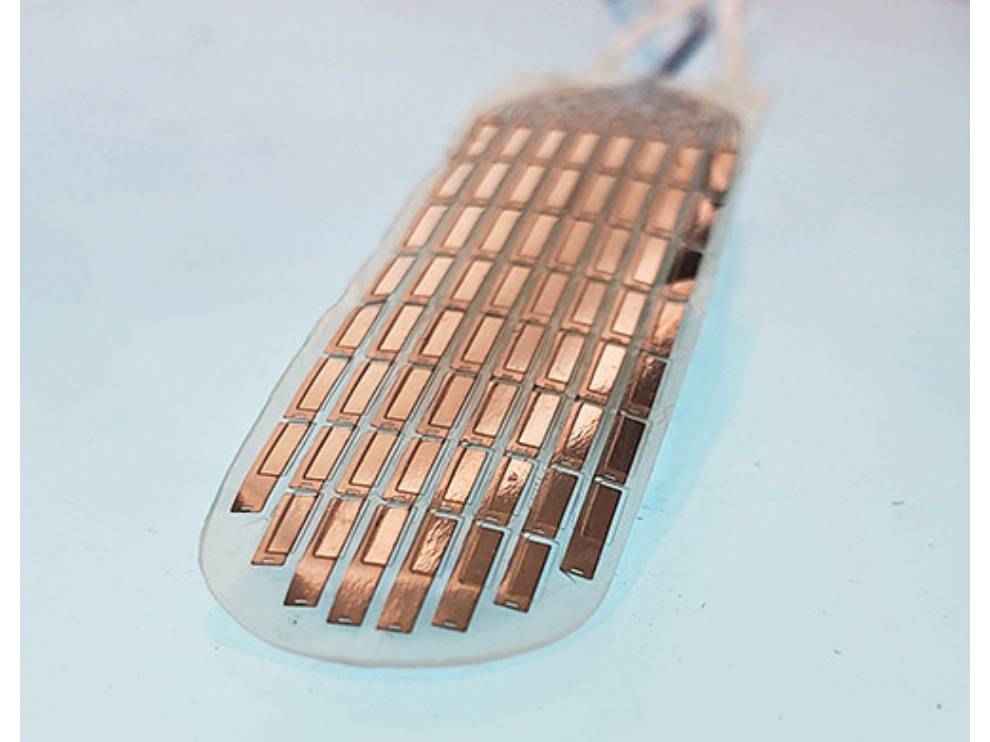The spine might just be a better interface for computers than the brain

Housed within the backbone, or the vertebral column is an extension of the brain, known as the spinal cord. At the neck, the spinal cord attaches to the brainstem, and is responsible for connecting most of the nerves in the body to the brain and vice versa, although there are a few nerves in the head that originate directly from the brain. While the brain does all sorts of things, the spinal cord has very specific functions. It transmits the signals that control voluntary movements of the body, as well as relays back information from the sensing neurons. The spinal cord is also responsible for reflex actions.
 Survey
SurveyRunning through the centre of the backbone is a thin column known as the central or ependymal canal. This space is filled with cerebrospinal fluid, the same fluid that surrounds the brain in the skull. This is a delicate part of the body, and any injuries can have serious consequences. Any kind of sudden, jerky movement, excessive pressure, or stretching apart of the vertebrae can permanently damage the spinal cord. Falls, motor vehicle accidents and sports-related injuries can also result in permanent damage. A whole range of inflammatory and infectious diseases including meningitis and tuberculosis can also result in spinal cord injuries. The resulting condition can be debilitating for anyone who experiences such injuries, with permanent paralysis, loss of sensory functions, loss of bladder control, and a dependence on medical apparatus for respiration. Depending on the particular vertebrae where the injury has occurred, there may be milder effects, such as paralysis in the wrists or hands, or an inability to grasp objects, and weak hand muscles. According to statistics by the World Health Organisation, every year between 250,000 to 500,000 people around the world suffer from spinal cord injuries.
After such an injury, an individual has to essentially withdraw from society. They have to depend on caregivers and assistive technologies, and basically live out the rest of their lives as outcasts. There are a number of researches being done to develop assistive technologies that can restore motor, and if possible sensory functions for these individuals, so that they can be reintegrated within society, and live a productive, mostly normal life. One of the new areas of research are spinal cord-computer interfaces, which are in theory simpler to realise than brain computer interfaces, because the spinal cord is relatively simpler than the brain. As the function of the spinal cord is to send the signals for movement, sensors tapping into it, can in theory derive more direct information on the intended types of movements, as compared to say an implant in the motor cortex of the brain, that is used for the same purpose, that is say transmitting signals to an exoskeleton that assists with the movements of limbs. Potentially, the use of spinal implants in tandem with brain implants can further increase the efficacy of the assistive technologies.
When a person decides to take a step, the motor cortex of the brain relays electrical signals down the backbone, where they reach the motor neurons at the lower spinal cord, near the lumbar region. These neurons extend and contract the leg muscles, so that the individual can take that step. If there is an injury along the spinal cord, then the connection between the motor cortex located in the brain and the motor neurons for the leg muscles located in the lower back is interrupted. The motor cortex and the motor neurons themselves are perfectly functional, the paralysis is caused by their inability to communicate with each other.
In 2016, an international team of researchers experimenting on rhesus macaques, managed to restore motor control on paralysed legs. The two macaques used in the experiment had lesions on their spines spanning the thoracic region, which essentially covered half the spinal cords. The condition is temporary for the affected macaques, and they naturally make a full recovery in about a month. However, such lesions accurately simulate injuries in the spinal cord that cause paralysis in humans, and were useful for the purpose of the study. Now what the researchers did was first use medical probing techniques to identify the neural hotspots in the spine responsible for locomotor control of the leg muscles. This gave them a clue about which regions to simulate with electrical impulses. A brain implant component was plugged into the motor cortex of the macaques, which uses an electrode array to measure brain activity. The design of the array was based on the BrainGate design, an effort by several institutions to develop an implant that allows paralysed individuals to control robotic arms with their thoughts. This brain implant relayed signals from the motor cortex of a monkey to a computer, where they were processed and then relayed back to another implant in the lower spine. This second implant in the spine provided electric stimulations to the motor neurons, responsible for the movement of the legs. Both the monkeys were able to walk because of the combination of implants. Now, the important part here is the use of the computer and wireless transmission of the signals, because using a wired setup along with the required computing hardware would severely restrict the range of motion available to the monkeys. The animals were able to spontaneously start moving when the system was turned on.
Before such a system can be translated to human patients, there are some kinks that remain to be worked out. The researchers were unable to determine the amount of pressure that the monkeys were able to put on the affected limb. This means that the study could not effectively judge if the locomotion capabilities were entirely restored for the monkeys, or that the legs were still weaker than unaffected monkeys. Additionally, the implants could not transmit sensory information from the leg back to the brain. This is just one of the many studies conducted in the area. Scientists have tapped into information from the cervical spinal cord to restore precise gripping capabilities in monkeys, successfully stimulated forelimb locomotion using electric signals in sedated monkeys, pelvic implants in mice have been used to restore locomotion, and electrode implants to restore motor functions in cats have tested to be stable for over six months.
In October 2019, The US Defense Advanced Research Projects Agency (DARPA) gave a $6.3 million grant to an international team led by Brown University researchers to develop and test an intelligent spine interface that can restore motor functions as well as bladder control for individuals affected by spinal cord injuries. The researchers also hope to use the same implant to restore the sensory functions of the affected regions, and transmit information from the neurons below the site of injury, back to the brain. One of the goals of the project is to use AI to decipher the signals recorded from the spine. Eventually, the team hope to do away with the external computer altogether, and develop a spinal implant with an integrated computer for restoring motor and sensory functions.
Aditya Madanapalle
Aditya Madanapalle, has studied journalism, multimedia technologies and ancient runes, used to make the covermount DVDs when they were still a thing, but now focuses on the science stories and features. View Full Profile

